Header image from National Park Service, Congaree National Park, Hopkins, South Carolina.
South Carolina was admitted on May 23, 1788 as the 8th state.
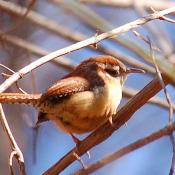 Bird:Carolina Wren .
Bird:Carolina Wren .
The birds are generally inconspicuous, avoiding the open for extended periods of time. When out in the open, they investigate their surroundings and are rarely stationary. After finding a mate, pairs maintain a territory and stay together for several years. Both sexes give out alarm calls, but only males sing to advertise territory.
State bird of South Carolina In 2000, the Carolina wren was featured on the back of the South Carolina edition of the 50 State Quarters.
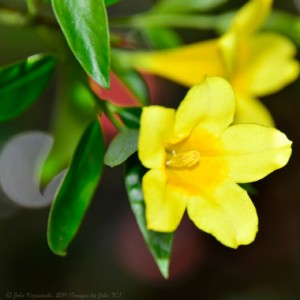 Flower: Yellow Jessamine – became the official state flower in March 14,1924. It is also called Carolina jessamine. Other names include trumpet vine, evening trumpet flower, and both yellow jasmine and Carolina Jasmine. (Jessamine and jasmine are two variations of the same word, and both are acceptable and accurate names for this plant.
Flower: Yellow Jessamine – became the official state flower in March 14,1924. It is also called Carolina jessamine. Other names include trumpet vine, evening trumpet flower, and both yellow jasmine and Carolina Jasmine. (Jessamine and jasmine are two variations of the same word, and both are acceptable and accurate names for this plant.
Jessamine is an evergreen vine that climbs trees, fences, and latticework all over our state. It blooms in very late winter or early spring, offering the first hope of warm weather to come! This flower loves sun and can grow quite fast given plenty of space and moist, well-drained soil.
When the US Mint decided to release quarters for each of the states, it was decided that Yellow Jessamine would appear on South Carolina’s quarter, along with the palmetto tree and the Carolina Wren.
Important* – Although jessamine’s delicate, funnel-shaped blossoms are beautiful and fragrant, these flowers are poisonous! Touching them can produce an allergic reaction, and eating them can be fatal. Be careful not to mistake them with flowers such as honeysuckle, which contain a sweet and unharmful nectar.
Tree: Palmetto  They are fan palms. Sabal Palms are also known as cabbage-palm, palmetto, and swamp cabbage.
They are fan palms. Sabal Palms are also known as cabbage-palm, palmetto, and swamp cabbage.
Sabal palms are extremely salt-tolerant (can even grow where washed by sea water at high tide) and are often seen growing near the Atlantic ocean coast. The tree produces the palm heart which is used in heart of palm salad but harvesting the palm heart kills the tree. This tree is the state symbol of Florida and South Carolina.
State Quarter
From theus50.com
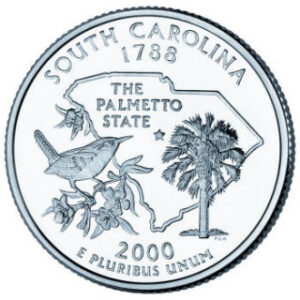
The South Carolina quarter shows key state symbols- a Palmetto Tree, the Carolina Wren and the Yellow Jessamine. An outline of South Carolina, the nickname “The Palmetto State” and a star indicating the capital, Columbia, form the quarter’s background.
The Carolina Wren, the state bird, and the Yellow Jessamine, the state flower, are native throughout South Carolina; the importance of the Palmetto Tree, the state tree, dates back to the Revolutionary War. In 1776, colonists in a small fort built of Palmetto logs successfully defeated a British fleet trying to capture Charleston Harbor. Since then, South Carolina has been called “The Palmetto State”.
Capital: Columbia
Nickname: Palmetto State
Before being known as the Palmetto State, South Carolina was known as, and had emblazoned on their license plates, the Iodine State.
Motto: Prepared in mind and resources/ While I breathe, I hope
South Carolina Facts and Trivia
South Carolina is named in honor of King Charles I of England, who first formed the English colony, with Carolus being Latin for “Charles”
Early attempts to settle what is now South Carolina were failures. Spanish explorer Gordillo arrived in 1521. The Spanish returned in 1526 in the hopes of finding gold but abandoned the settlement.
In 1562, the French arrived and built a settlement on Paris Island. This settlement failed as well
The first permanent British settlement in South Carolina was founded in 1670. It would later become the city of Charleston. Settlers were soon moving into the region to grow crops on large plantations. In order to work the plantations they brought in slaves from Africa. Two of the main crops were rice and Indigo, which was used to make blue dye.
As the region grew, the people in South Carolina wanted to have their own government from North Carolina. They got their own governor in 1710 and were officially made a British colony in 1729.
When the American Revolution began, South Carolina joined with the thirteen American colonies in declaring their independence from Britain. A lot of fighting took place in South Carolina including major battles at King’s Mountain and Cowpens that helped to turn the tide of the war. There were more battles and fights in South Carolina than in any other state during the war.
The walls of the American fort on Sullivan Island, in Charleston Harbor, were made of spongy Palmetto logs. This was helpful in protecting the fort because the British cannonballs bounced off the logs.
Charleston welcomed a shipment of golf balls and clubs from Scotland as early as 1743. On September 29, 1786, the South Carolina Golf Club was formed and, within the same year, America’s first golf course was established on Harleston Green. In 2011, there were more than 350 golf courses within the state of South Carolina.
After the Revolutionary War, South Carolina became the eighth state to join the United States on May 23, 1788. The first capital was Charleston, but the capital was moved Columbia in 1790 in order to be located near the center of the state.
With the invention of the cotton gin in 1793, many of the plantations in South Carolina began growing cotton. The state became very wealthy from cotton. Plantation owners brought in slaves to work the fields. By the middle of the 1800s, there were over 400,000 slaves living in South Carolina.
South Carolina was the first state to secede from the Union in order to form the Confederate States of America. On April 12, 1861 the Civil War began with fighting at Fort Sumter near Charleston. When the war finally ended in 1865, much of South Carolina was destroyed and needed to undergo reconstruction. The state was readmitted into the Union in 1868 after ratifying a new constitution.
After capturing Columbia on February 17, 1865, Union soldiers under General William Tecumseh Sherman burned and destroyed more than two-thirds of the city. Due to scarce funding following the war, the new State House was not rebuilt until 1903.
South Carolina is the nation’s leading peach producer and shipper east of the Mississippi River. Johnston is known as the Peach Capital of the World.
The introduction of tobacco in 1894 rocketed Mullins into the Tobacco Capital of South Carolina. As many as 200 tobacco barns sprang up throughout the community. Warehouses were also constructed and the first tobacco sale took place on August 28, 1895.
The Edisto River Canoe & Kayak Trail covers 66 miles of the river for which it’s named. The Edisto is reputed to be the world’s longest free-flowing “blackwater” stream. “Blackwater” is a term that not only describes the color of the tannin-rich water, but also refers to the peaceful rate of flow that characterizes such rivers.
The Upper Whitewater Falls is the highest cascade in eastern America; it descends for nearly 411 feet.
Bomb Island on Lake Murray each spring and summer is the home of a very unusual event. Each year thousands of Purple Martins return to this island to roost for the summer. The island has been declared a bird sanctuary and it is quite a sight to watch these birds return to Bomb Island each day around sunset.
There is an old saying in Marion that anyone who drinks water from Catfish Creek becomes infatuated with the area and wishes to remain there.
Fountain Inn was proud of the town’s most famous native son. Clayton “Peg Leg” Bates lost his leg in a cotton gin accident at the age of 12; he overcame his tragedy to become a famous dancer. His signature step was the “Imitation American Jet Plane,” in which he would jump five feet in the air and land on his peg leg, with his good leg sticking out straight behind him. During his career, Bates performed more than 20 different times on the Ed Sullivan television show, more than any other artist. He died in 1998.
On Nov 2, 1954 Strom Thurmond became the first US senator elected by write-in vote. Thurmond received 139,106 write-in votes to win his seat. He defeated Democratic nominee Edgar Brown, who received only 80,956 votes.
Beginning Labor Day and running through the following weekend, the South Carolina Apple Festival celebrates the beginning of apple harvest season in Oconee County, the largest apple-producing area in the state.
Strange Laws:
When approaching a four way or blind intersection in a non-horse driven vehicle you must stop 100 ft from the intersection and discharge a firearm into the air to warn horse traffic.
It is perfectly legal to beat your wife on the court house steps on Sundays.
By law, if a man promises to marry an unmarried woman, the marriage must take place.
It is unlawful to work on Sunday.
It is considered an offense to get a tattoo.
Horses may not be kept in bathtubs.
You must be 18 to play pinball.
People:
- Whispering Bill Anderson, songwriter
- Elzie Wylie “Buck”Baker Sr., auto racer
- James “Godfathe”r Brown, singer
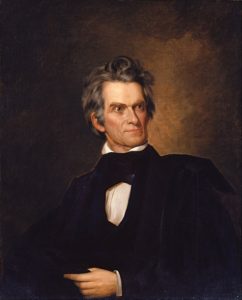 John C. Calhoun, statesman
John C. Calhoun, statesman- Ernest Evans, aka Chubby Checker, singer
- Joe Frazier, prize fighter
- Althea Gibson, tennis champion
- Thomas Gibson, actor
- Dizzy Gillespie, jazz trumpeter
 Nikki Haley, American politician, Ambassador to the United Nations
Nikki Haley, American politician, Ambassador to the United Nations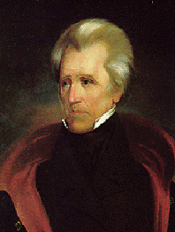 Andrew Jackson, U.S. president
Andrew Jackson, U.S. president- Jesse Louis Jackson, civil rights leader
- Eartha Kitt, singer
- Strom Thurmond, politician
- William B. Travis, lawyer, soldier, died at the Alamo
- William Westmoreland, army chief of staff
- Vanna White, TV personality
Credits
See history.com
See ducksters.com
See 50 states.com
